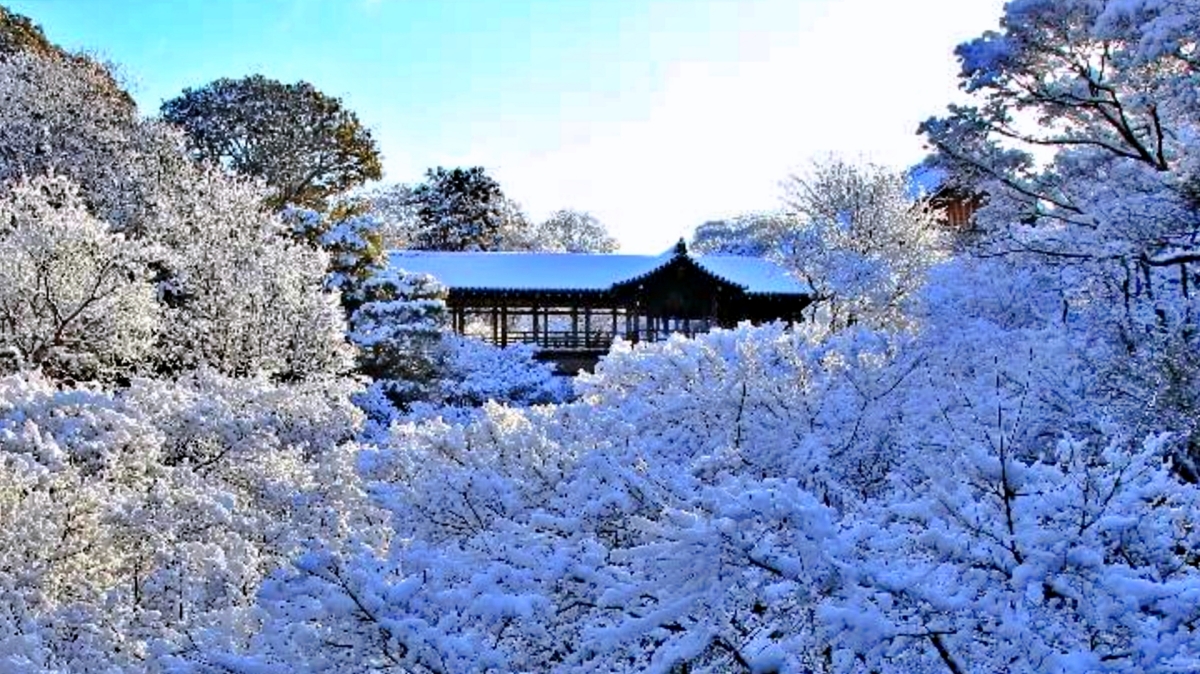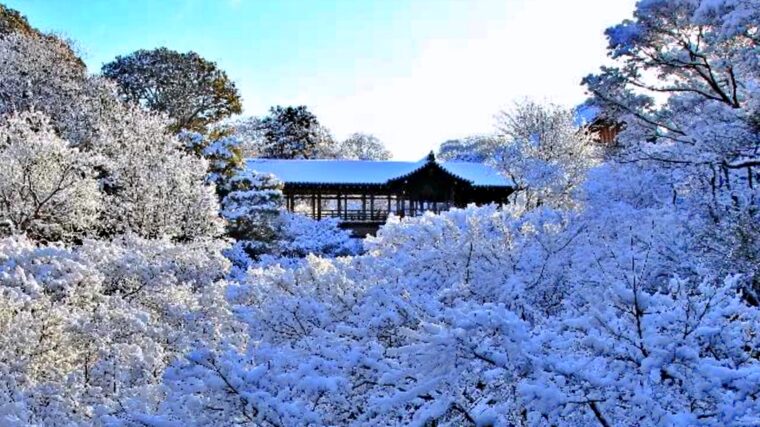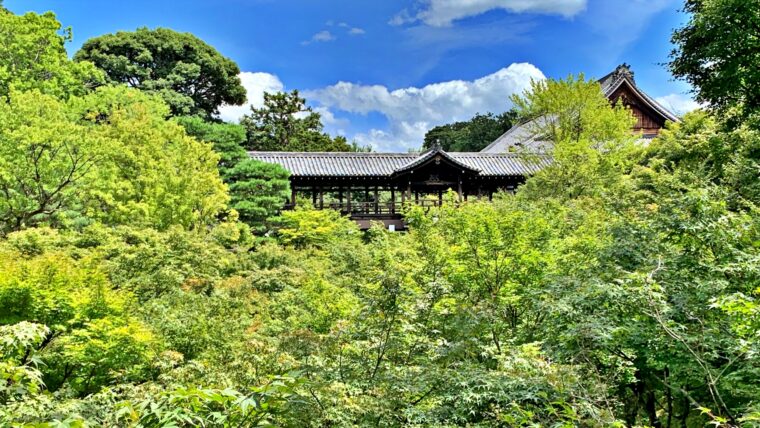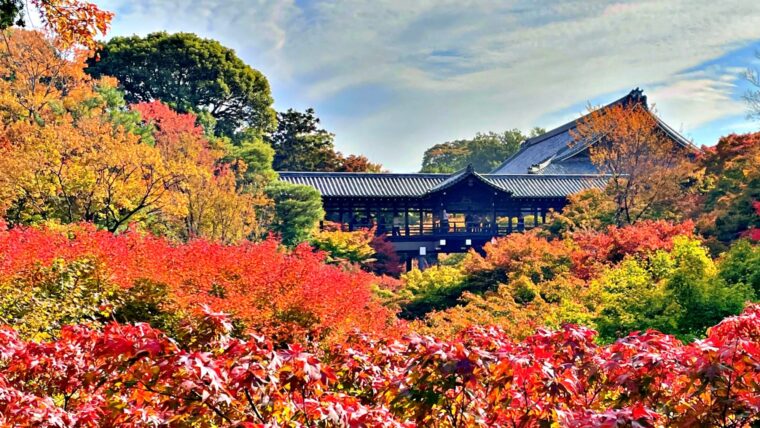Language:Japanese
Tofukuji Temple, the head temple of the Rinzai sect Tofukuji sect, is known as one of the best autumn leaves spots in Kyoto.
The most spectacular sight is the autumn leaves that dye the valley called “Sengyokukan” that runs east to west through the temple grounds, and the view from the two bridge corridors, Tsutenkyo and Gaunkyo, is truly magnificent.
As you can see, Sengyokukan at Tofukuji Temple is famous for its autumn leaves, but the scenery that changes with the seasons is also wonderful.
Scenery of Sengyokukan that changes with the seasons
This is the seasonal scenery of Sengyokukan as seen from Gaunkyo Bridge towards Tsutenkyo Bridge. (* Click on the photo to enlarge it.)
The falling snow absorbs the surrounding sounds, creating a quiet and mystical atmosphere that makes you feel as if you are in another world. There are few tourists during this season, so if you are lucky, you can enjoy the luxury of having this view all to yourself.
From spring to summer is the season of fresh green. The lush maples are gentle on the eyes and give a refreshing feeling. At this time of year, wild birds such as the hototogisu and the Japanese white-eye come out of nowhere and let us hear their beautiful chirping.
Because it is a valley, the temperature does not rise even in midsummer, and a pleasant breeze blows on sunny days.
It is crowded with many tourists during the most famous season of autumn leaves.
Tofukuji Temple is called Garanzura
Did you know that the head temple of the Rinzai sect of Buddhism has a name called “Zenzura”?
Zenzura is a name that expresses the characteristics of the temple in one word, and Tofuku-ji is called “Garanzura” because it was a temple with a large monastery(Garan).
Garan is a Japanese translation of the Sanskrit word “Sangharama,” which originally meant a quiet place where monks gathered to practice Buddhism.It seems that the term “Garan” later came to mean temple buildings as well.
In other words, a “Garan” is a building in a temple, and in Zen Buddhism, the seven buildings of the Sanmon(The main gate representing the temple), Buddha Butuden(Hall), Hattou(Dharma Hall), Kuri, Soudou(Buddhist Hall), Bathroom, and Tosu(Toilet) are collectively known as the “Shichido Garan.” Tofukuji Temple is also called “Garanzura” because it has one of the largest “Shichido Garan” in Japan.
In conclusions
Tofukuji Temple has a famous building designated as a national treasure and important cultural property known as the “Garanzura” and a “Hojo garden” that expresses the “Big Dipper” and “Checkerboard pattern” that are designated as national scenic spots. There is. In addition, Gaunkyo Bridge, Tsutenkyo Bridge, and Engetsukyo Bridge, which span the valley that runs through the temple grounds, are known as the Three Famous Bridges of Tofukuji Temple.
The famous autumn foliage of the maples is a spectacular sight that you cannot miss, but the “Green maples” in spring and the snow-covered Sengyokukan are just as worth seeing during the autumn foliage season.
Please come to this charming Tofukuji Temple.
Access
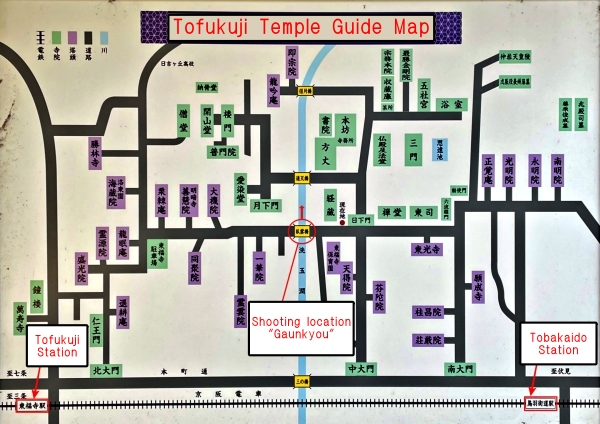
Tofukuji temple guide map
The nearest station is Keihan Electric Railway “Tofukuji Station” or “Toba Kaido Station.”
The distance to Tofukuji’s entrance “Nikkamon” is slightly closer from “Toba Kaido Station”, but there are more places to see at “Tofukuji Station” where there are many sub-temples along the way.

